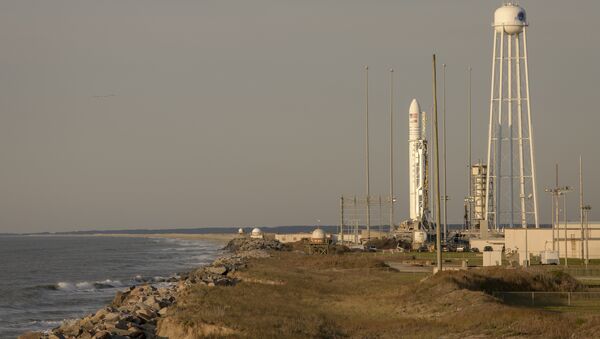New Delhi (Sputnik): Two of India's neighbours, Sri Lanka and Nepal, have marked their entry in to space with the launch of their first ever satellites on Thursday from the Mid-Atlantic Regional Spaceport at NASA's Wallops Flight Facility on Virginia's East Shore, United States.
READ MORE: Russian Astronomers Spot Mysterious New Manoeuvring Satellite in Earth's Orbit
Prime Minister KP Sharma Oli congratulated Nepal and the Nepali people after the successful launch of their satellite.
Though a humble beginning, with the launching of NepaliSat-1 Nepal has entered the Space-Era. I wish to congratulate all those scientists and institutions that were involved right from the development to its launching thereby enhancing the prestige of our country. pic.twitter.com/PpF1PIcQfa
— K P Sharma Oli (@kpsharmaoli) April 18, 2019
Sri Lanka's Raavana-1 satellite weighs around 1.05 kg while Nepal's first satellite, Nepali1, weighs around 1.3 kg. The two nano-satellites will be used to send images of geographical areas of their respective countries from 400 km away while orbiting the earth.
Sri Lanka's 🇱🇰 first research satellite RAAVANA-1 (1.1kg) built by two Sri Lankan youths launched into space, marking #SriLanka’s entry into the global space age. Satellite had been taken to International space station (ISS) as a cargo #Cygnus #LKA @NASA pic.twitter.com/Ay6wGEBKAk
— Sri Lanka Tweet 🇱🇰 (@SriLankaTweet) April 18, 2019
"The Northrop Grumman Antares rocket and its unmanned Cygnus spacecraft launched into the space from the Mid-Atlantic Regional Spaceport at NASA's Wallops Flight Facility on Virginia's East Shore, kicking off a two-day voyage to the space station. Liftoff occurred at 4:46 pm EDT on 17th April 2019 (2:16 am 18th April Sri Lanka time)," a NASA statement read following the launches.
READ MORE: Israeli Firm Dumps Satellite Snaps of Alleged 'Iranian' Facility Struck in Syria
The two satellites have a minimum lifespan of one and half years, and will be kept at the International Space Station for a month before being deployed to orbit the Earth.


